If you’re spending time in the North Carolina mountains, you should spend time in one. And you can if you tour Linville Caverns. Find out everything you need to know about North Carolina’s only show cavern here.
For more help planning your trip, check out all of our posts about North Carolina.
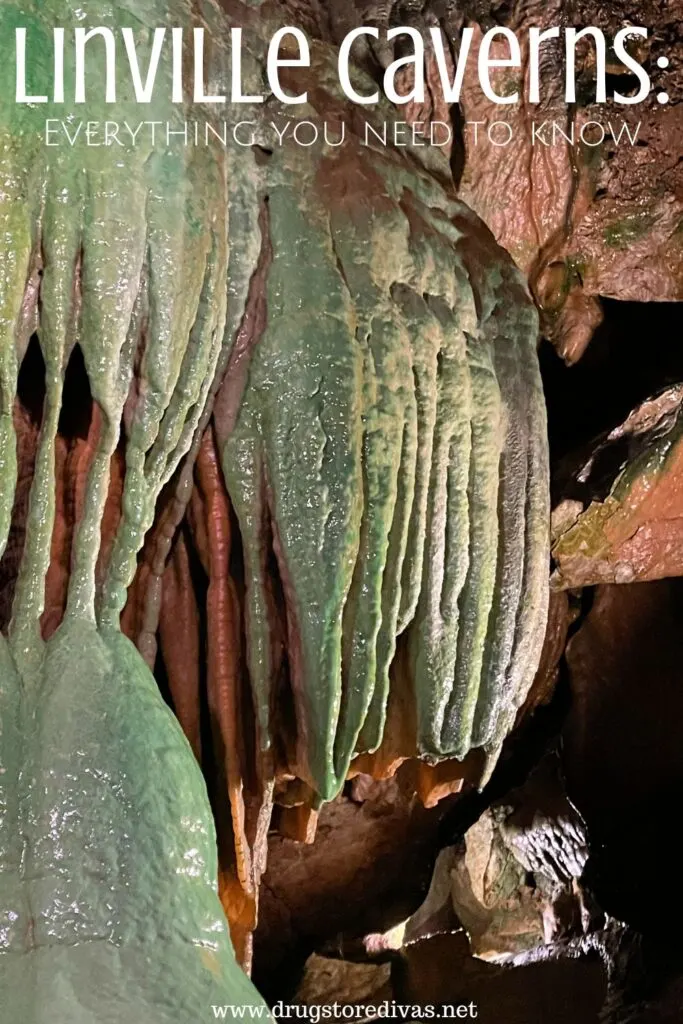
When my cousin and I were planning our trip to the North Carolina mountains, we said we were going to do everything we could possible fit into our short trip. We didn’t know when (if ever) we’d get back to the area, so we had to do as much as possible.
And that included a little detour for Linville Caverns.
Linville Caverns are North Carolina’s only show cavern. Which means exactly what you think it means. It’s a cavern that’s shown to the public. There are other caverns in North Carolina. I’m not a speleologist (which is a fancy word I just Googled which refers to a scientist who studies caves). But, from a regular person perspective, the other caverns in North Carolina are just very unimpressive rocks with a small opening that aren’t worth a detour.
Linville Caverns is a full on cavern you can tour, explore, and learn in. It’s absolutely worth checking out if you’re in Western North Carolina.
Linville Caverns: Everything you need to know
Location
Linville Caverns are located underneath the base of Humpback Mountain (part of the Blue Ridge Mountains) in Marion, North Carolina, slightly south of the unincorporated village of Linville Falls. There are huge signs directing you to the entrance of the parking lot, so you’re not gonna miss it.
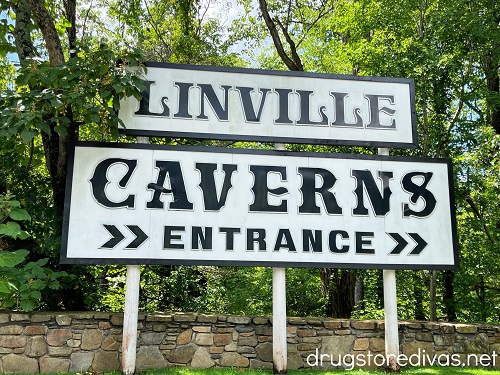

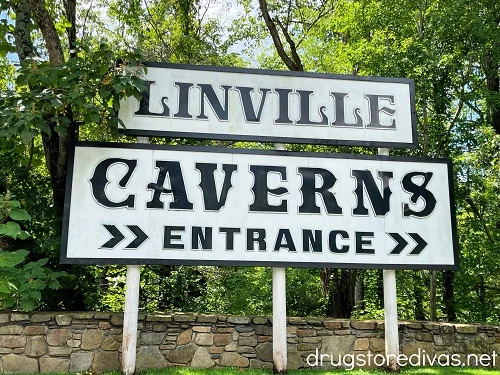

Arrival at the Linville Caverns
When you pull into the parking lot, there’s a large welcome building with a nice gift shop inside. That’s where you’ll purchase your ticket for the guided tour. Tours leave about every 15 minutes, so you don’t have to buy your ticket as soon as you walk in the door. However, if it’s busy, you’ll want to do that because tours are limited to 15 guests so you might end up waiting a while. You can always come back to look at the souvenirs (like the handcrafted clay oogles we saw) after your tour.
Once you get your timed ticket, you’ll wait outside until it’s your tour time.
Your tour guide will call your ticket time and you’ll line up in front of a sign that says, “Beware of Bats.”
Yes, there are little brown bats that live inside Linville Cavern. Although the chance of you seeing them is pretty slim. The majority of the bats actually are unalived (as the kids say) due to white-nose syndrome. It can actually wipe out an entire colony of bats during hibernation, which is why it’s a big deal. After you exit the cavern, you’ll need to wipe your feet on a mat sprayed with a solution of bleach and water so you don’t accidentally track the fungus around. You’ll also need to wash any of your clothing before heading into another cavern so you don’t carry any fungus from cave to cave.
With all those notes out of the way (and yes, your tour guide will give you all of that information), you get to enter Linville Caverns for your half hour tour.


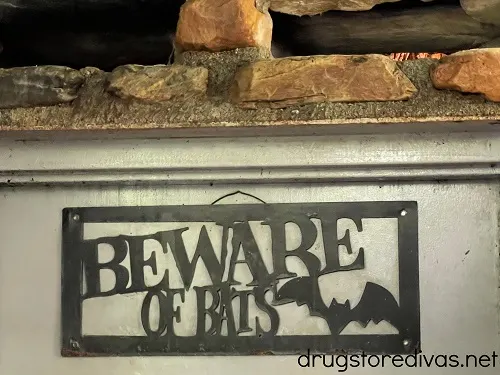

Entering Linville Caverns
There’s a small concrete ramp, at a 30 degree decline, leading you from the waiting area to the door to enter the cavern. And that’s it. You’re at cave level.
That’s actually pretty different than many cave entrances. Carlsbad Caverns National Park in New Mexico, for example, has a 1.25-mile Natural Entrance trail that leads you down 79 stories into the big room. That takes an hour.
The walk from the waiting area to the Linville Caverns entrance is maybe 30 seconds, if you’re walking slowly.
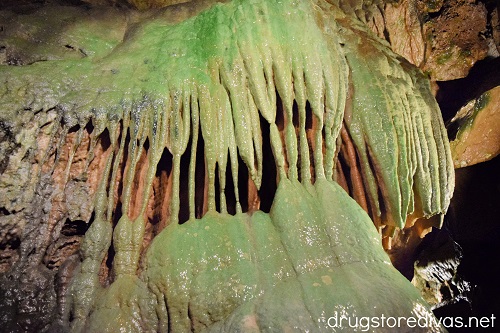

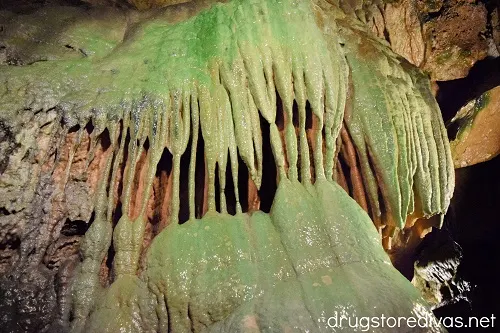

Touring Linville Caverns
Once you get inside, the cavern — which is a consistent 52 degrees F at all times — is comprised of different “rooms” that were formed because slow-moving water dripped through the cave. You can read more about that here because, again, I’m still not a speleologist.
Do you need to be a speleologist to appreciate spelunking (that’s the other new word Google taught me while I was writing this post. Spelunking is the exploration of caves.)? No. You just have to be someone with eyeballs.
There’s a stream that runs through the first room where you can see native trout swimming by. The sad part about those trout is that they’re blind due to living in a very dark cave. The happy part about those trout is that they’re how the cavern was discovered in the first place.
In the early 1800’s (1822 if you think this cavern history will come up as a question on Jeopardy one day), Fayetteville native Henry E. Colton (the eventual state geologist of Tennessee) and a group of local fishermen led a fishing expedition in the area. They noticed trout swimming in and out of solid rock, which, of course, is impossible. So they explored a little more and found a small opening that led them into caverns.
Between Colton and crew’s discovery and public touring beginning in the late 1930s, there’s an interesting folklore known as the tale of the civil war deserters. Soldiers fighting in the Civil War who needed, let’s say, a little break from the war, hid in the caverns. They bartered with the locals in the area, fixing leather shoes for food. Since the caverns are a chilly 52 F at all times, they needed fire to keep warm. You can see soot in the caverns, which is evidence that there had been fire there.
That fire, unfortunately, was the defector’s downfall. Smoke vented through the top of the mountain, giving up their hiding spot.
You learn this, and more of the history of the caverns, on your tour.
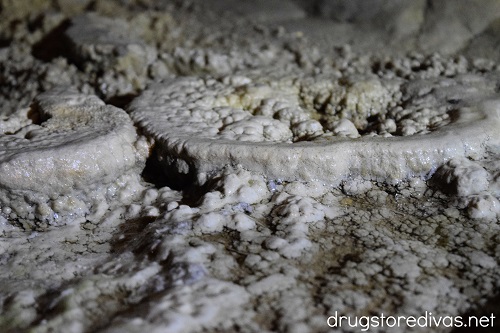

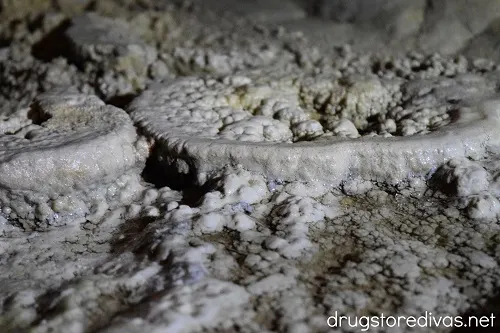

The tour is really interesting.
The tour route is about 600 of the 1,300 feet of Linville Caverns. The remaining 700 feet is too narrow and unsafe to be a part of public viewing.
In my opinion, it’s face paced. You go from room to room with your guide explaining the different aspects of Linville Caverns, which are actually still active limestone caverns. That means they’re still forming, although, it takes thousands of years of water drops for you to really notice anything. So, anytime you, personally, go to the caverns, it’ll look the same. But still. Cool fun fact for that Jeopardy episode.
Once the guide is done explaining the geological history in that area, you and your group travel on to the next room, sometimes waiting for a departing group to pass by. You don’t get that much time to actually marvel at the caverns yourself or take very many photos.
That’s good for people who want to see the caverns and then move on to the rest of the day. But for me, personally, I would have liked to channel my inner Cranberries and lingered (that’s a very niche joke; kudos if you laughed).
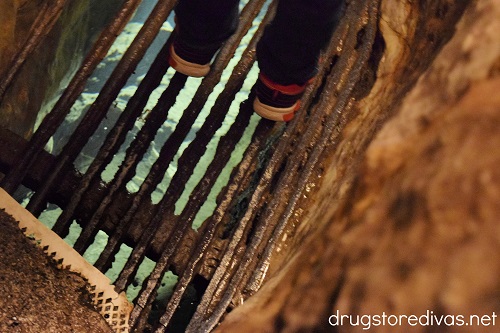

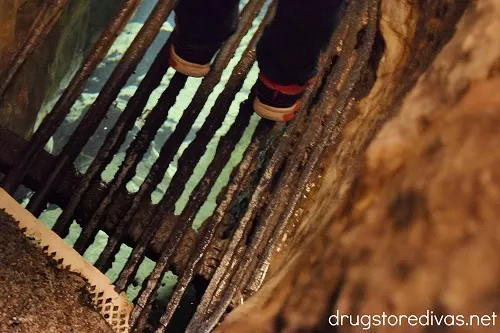

There are two parts of the tour that are worth mentioning, in case you’re on the fence about going.
The first is a long narrow passage of the cavern. If you’re claustrophobic or afraid of heights, this section isn’t for you. The passage sits above an underground stream known as “The Bottomless Pool.” There’s a grate on top of the water, so you’re not going to fall in, but knowing that divers went down 250 feet and didn’t find a bottom might freak some people out. The passage is wide enough for one person, so if you’re the first one in, you’re the last one out. It wouldn’t be the best time to have a panic attack because everyone would need to exit the passage in order for you to exit.
Your guide preps you for this ahead of time and tells anyone who might be worried to stay near the back.
The second part happens near the end of the tour. There’s a lighting system installed in the caverns so everyone can safely get around, plus see the beauty of the cave. However, that’s not how the cavern is naturally. It’s a cave. So it’s usually dark. Actually, a cave is only one of two places where you can experience total darkness (the other is the bottom of the ocean).
And so, to replicate that, your tour guide turns off the lights. And you’re there in complete darkness. Which, I’ll be honest, is a wild experience. It’s impossible for me to explain to you just how dark that dark is.
Our guide joked and said, “If anyone wants me to turn the lights back on, raise your right hands.” You can’t see your hands, of course. You can’t see anything. Even if you turn off all the lights in your house and close your eyes very tightly, you won’t experience darkness this dark.
So if you’re scared of the dark (or impending doom), this is your warning. Our guide did suggest touching the person next to you while the lights were going out and that does give you a sense of your surroundings and grounds you a bit. Because without that, you’re just in the dark.


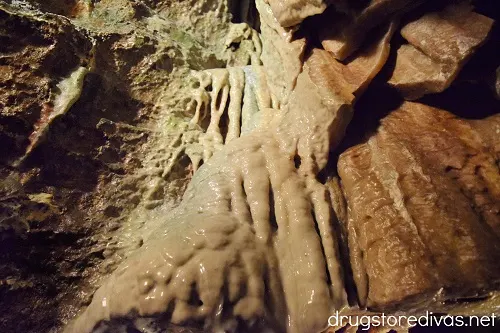

Linville Caverns: Frequently Asked Questions
19929 US-221; Marion, NC
(828) 756-4171
Linville Caverns are open to the public year-round, but hours vary by season.
March to November: Thursday to Monday from 9 am to 5 pm (before DST) and 9 am to 4:30 pm (after DST).
December to February: Saturday and Sunday from 9 am to 4:30 pm.
Tickets can be purchased when you get to Linville Caverns.
For the 2023 season, adults are $13, seniors (62+) are $12, and kids (ages 5 to 12) are $11.
Children under age 5 are considered “underage children” and are admitted free with an adult or senior admission. Underage children do count towards each tour’s capacity limit.
The guided tour of Linville Caverns lasts about 30 minutes.
It’s 52 F inside Linville Caverns at all times, regardless of the temperature outside.
Definitely wear sneakers or a similar comfortable shoe with a grip. Manmade pathways guide you through the cavern, however, you’re still walking on potentially slippery surfaces.
If you’re usually cold, you might want to wear a long-sleeved shirt and pants when you’re touring the cavern.
The caverns are a good rainy day activity because they’re, technically, indoors (in mountain?). However, water can drip inside the cavern, so you might want to wear a poncho or raincoat inside.
They’re 2,500 feet below the peak of Humpback Mountain.
Much of the caverns are partially wheelchair accessible. There is a step to get to the area where the tour begins, a little bit of uneven terrain, and some areas, like where The Bottomless Pit is, that are too narrow to fit a full-sized wheelchair.
Strollers are not allowed on the tour. This includes strollers for children and for pets. However, pets can be carried into the caverns. Pets on a leash are not permitted.
Things To Do Near Linville Caverns:
Touring Linville Caverns isn’t going to take all day. So, you’re going to want to find a few other things to do in the area.




Famous Louise’s Rock House Restaurant
23175 221 Linville Falls Highway; Newland, NC
Famous Louise’s Rock House Restaurant makes my heart so happy. It’s located smack in the middle of where three counties (Burke, McDowell, and Avery Counties) meet. Markers to note each county are hung on the ceiling. We parked in Burke County, ate in Avery County, and went to the bathroom in McDowell County.
It’s whimsy and fun. Plus, the BLT and homemade fries we ate there were very good.
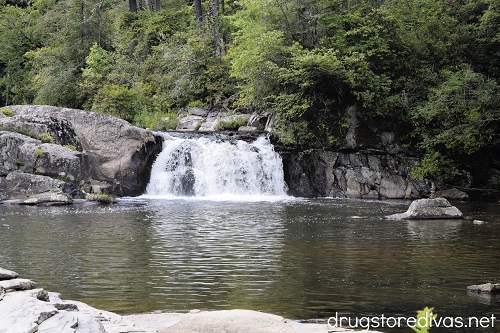



Linville Falls
Linville Falls Rd (Mile Post 316)
A couple miles across the Blue Ridge Parkway is Linville Falls. You have three options for moderate hikes to see the waterfalls.
Personally, we did the lowest of the three ridges because of timing. The gentleman working at the Linville Falls Visitor’s Center told us it would take hours to hike to the top and back and we didn’t leave that much time in our schedule for that.
Have you been to Linville Caverns? Let us know your experience in the comments.
